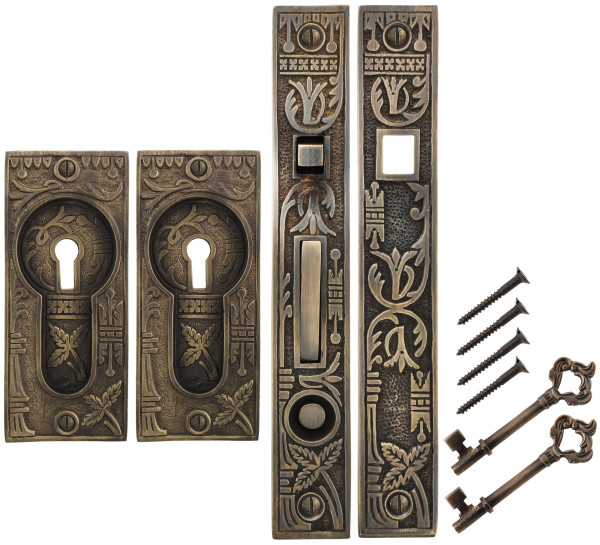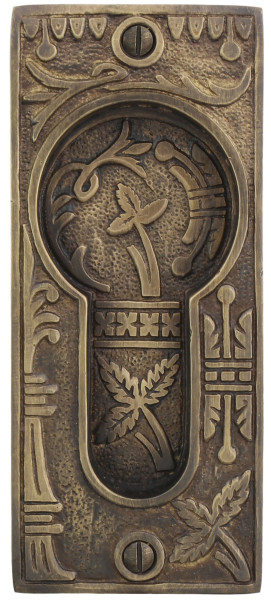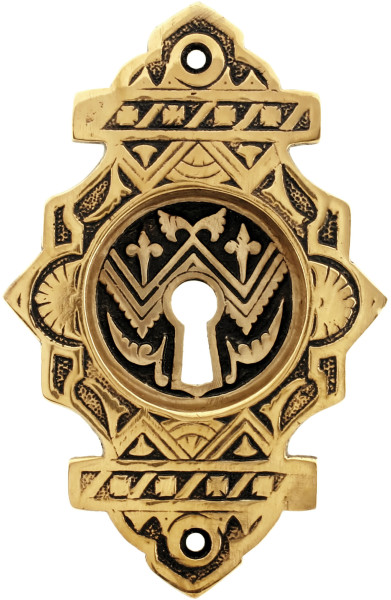
These pocket doors allow light to pass through to other rooms.
Jonathan Neitzel
Their New York City apartment in a gracious, early 20th-century building is comfortable—but had no room for guests. Jim Francis and John Nalewaja closed off one end of the master suite to carve out a small bedroom. It had to be sealed enough to control air conditioning, but they didn’t want to block daylight. When they came across a pair of Victorian-era conservatory window panels lying in a heap outside a salvage yard, they saw an answer. The oversize 8′ x 4′ windows could be reconfigured as pocket doors, installed on two sides of the new room. (A second set of solid doors is used when the guest room is occupied.)

‘Broken Leaf’ bit-key single pocket door mortise lockset with its pulls, an 1880s Eastlake design in solid brass with a hand-antiqued finish.
House of Antique Hardware

In the same pattern, a passage pull with no keyhole.
House of Antique Hardware
STRIP AND CLEAN
The old windows were covered with over a century’s worth of crusty and peeling paint, and so the first step was to strip them down to the poplar wood beneath. John Nalewaja used Citristrip, a nontoxic citrus stripper, then gently sanded with 100-grit paper in the direction of the grain. The poplar was treated with Daly’s Benite wood conditioner to better control penetration of the oil-based primer that came next. The dry primer was lightly sanded with 220-grit paper.
GRAIN AND FINISH
To match the door to the room’s original cherry trim, Nalewaja faux-grained the wood. Glass panes were taped off, then a base coat of Benjamin Moore’s ‘Dark Mustard’ semi-gloss was applied, allowed to dry, and lightly sanded. Next, Moore’s ‘Tobacco Brown’ was combed over the base with a graining tool. The result is a warm, chocolatey color with red highlights, mimicking the cherry. One coat of semi-gloss varnish was added to seal and protect the grained finish.

‘Oriental’ pull reproduces a ca. 1885 design; cast in solid bronze.
House of Antique Hardware
BUILD WALL POCKETS
Plywood walls were built to create the guest bedroom, with soffits to hang I-beams and the sliding track system. Wheels were attached to the beams, and the doors hung on the overhead tracks. Then the finished walls were papered to match the rest of the space.
The pocket doors have been outfitted with reproduction brass hardware.
Hardware for pocket doors
Sliding pocket doors need flush-mounted hardware so that nothing impedes their rolling into the wall.
• If the door is to lock, buy a mortise lockset with finger pulls—rectangular, or round if there is already a round knob opening cut into an old door.
• If you don’t need the door to lock, use a passage set with edge pulls.
• Pull escutcheons must be flush mounted: round or rectangular, with or without a key.







